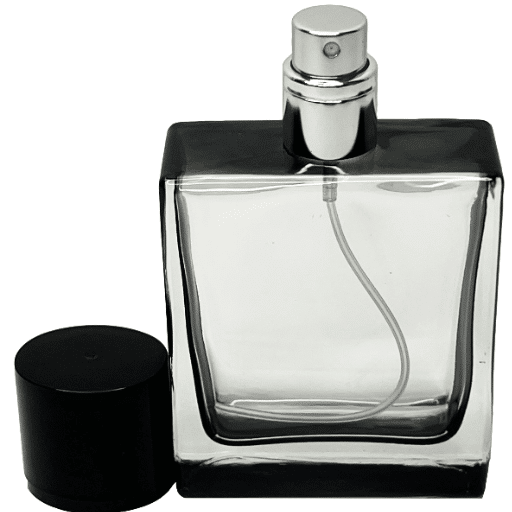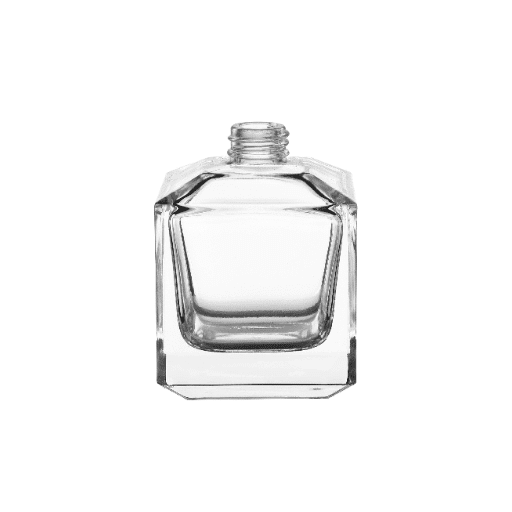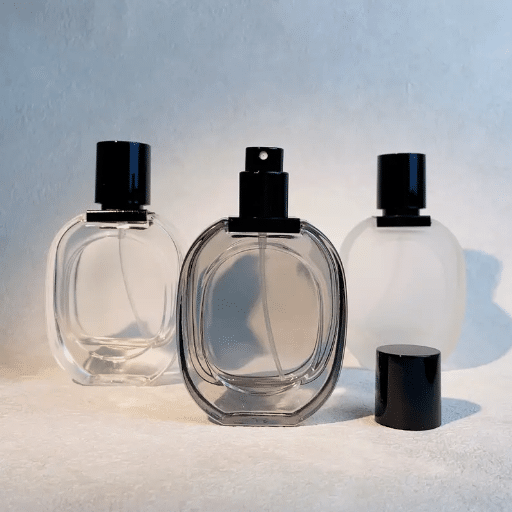Vintage brings many pleasures, and a perfume bottle is not as ordinary as decorative poreclain dolls. These contain histories, cultures, and craftsmanship that are overlayered with each other in a single piece of art which can be collected for all times. Each bottle speaks words of its own, as it carries with it the evolution of its society, the advances in science, and the prevalence of some artmonger’s creativity of the time. From the elegant tessellated crystal forms of the eclectic Victorian times beguile the soft swirls of lines in the contoured containers of modernism, these little masterpieces communicate the ideas of the treasure-trove. This Dis course comprehends the branches of aromatic social antiquity specifically the antique perfume bottles, their history and changes in those bottles, and why, even in this day and age, these objects are sought after by foreign gentlemen and women, and collectors. Yet this is an aesthetic function of perfume bottles which will be alive even for the most learned of the connoisseurs or the most innocent of the passersby.
What Makes an Antique Perfume Bottle Valuable?
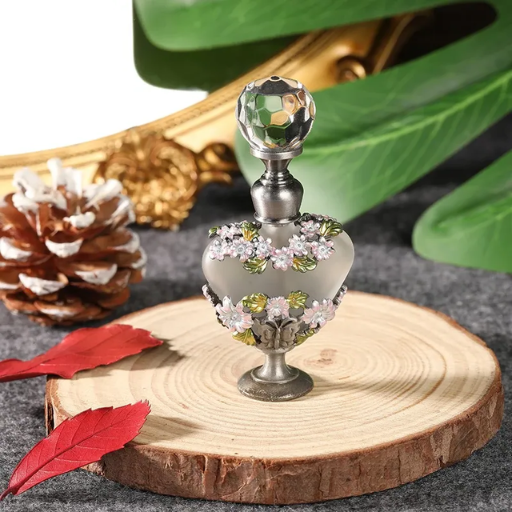
The price of an antique perfume bottle depends on various aspects. First, the number of bottles made and the reputation of the producer-Bottles that are fewer in number and made by great hands go for far more. Next, bottles in perfect conditions without cracks, breaking or any kind of cracks fetch higher returns. Also, what a bottle looks like and how it was crafted are another two basic factors-attention paid to delicate features, uncommon shapes as well as usage of superior materials such as crystal or porcelain inclusive of hand-painting features make the bottles more desirable. Further, the origin of the bottle doubles as a reason for upward movement in price; the bottles that are part of history or related to certain personalities and brands cost more. Lastly, it comes to the craze of the collectors- every unique or stylish creation cuts through time for its value.
Identifying Collectible Features
To do so, one must work out which parts are rare, what is the state of preservation and the like. It is well known that rare items such as one-time edition products which are no longer on the market, are in strong demand. It also matters whether the piece is whole with no damage or packed in its original box as all these factors contribute to the value of the piece. Provenance, which includes the history of the object, or its connection to a brand/individual/event or even an object itself, ensures greater value. In addition, the workmanship such as details of the design, the substance used and the distinct expat elements also play an important role in the comestibility of the work. Market preference towards collectibles should also be assessed to predict the attractiveness of particular objects.
Understanding the Historical Design and Style
Every object will be examined with touch and sight in view creating a picture in time based on the culture that was present during that time. For example, items created in the 1920s in an art deco style perceive geometric shapes and luxurious materials which depict how people were optimistic and forward thinking at that moment. Likewise, works from the Victorian period, focused on craftsmanship and attention to detail in elaborate styles and structures, will attribute these elaborate designs to the then-industrial revolution and an obsession with motifs.
To annotate history in design, one has to examine the structural changes in materials, manufacturing processes and design consistently popular at the respective time. There is a certain level of aesthetics corresponding to each period, mainly evident from hand-sewn items in the pre-industrial ages, or specific ornaments in reference to art styles. Moreover, let’s evaluate how the growing manufacturing, for example piston enabling forging in the 19th century impacted design. A technique of such facet is to context the elements of art within the historical timeline and provide a rationale for the occurrence and lasting of styles given a place and period as well as their interplay with contemporary design practice.
The Role of Glass and Crystal in Valuation
A number of factors affect the valuation of objects made from glass and crystal, these include their use along with the one’s localities and the providence of the makers. Fine crystal is considered to be more valuable than regular glass, as it is clear, heavy, cut to perfection as well as difficult to manufacture. Collector’s value rare objects, antique or otherwise, especially those made by premier manufactures of the likes of Baccarat, Swarovski and Waterford. Damages such as chips, cracks, and repairs may be substantial and affect worth that too the very lowest. This knowledge enables the precise evaluation as well as buying or selling appropriately which is not essential at such levels in the society.
How to Differentiate Between Vintage Perfume Bottles and Reproductions?
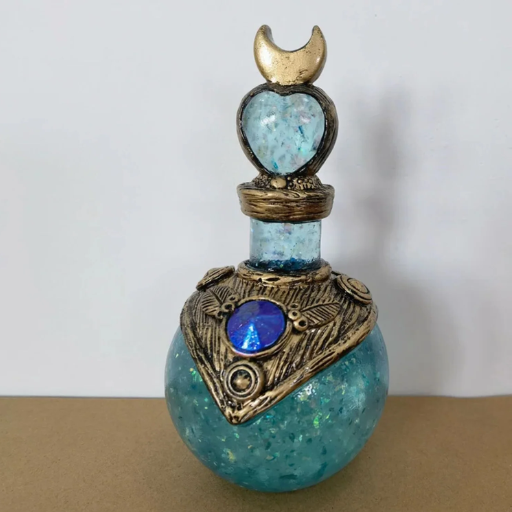
To begin with, check out the features and the materials used in making the perfume bottle brand. The vintage bottles are often made out of high quality glass that includes fine details and impeccable finishes, while there is a possibility of irregularities in the imitation bottles. Some reproductions are even too obvious since their construction is even more basic. Look for maker’s marks and engravings on the bottle because it was common for manufacturers to stamp their bottles with their logo, name and place of manufacture. A recognized method of dating a perfume bottle is by assessing any incrustations or wear. Most original perfume bottles fail to be quite ‘clean’. Additionally, consider the contemporary shapes and designs and how they have changed by the era. Most reproductions may try to ape the designs that were famous at some point in time but they will never come up with the materials and technological practices for that particular period. If at all there is any confusion regarding the piece, it’s good to have it appraised by an expert or consult books and other bugs for proper verification of the object.
Key Indicators of Authentic Antique Bottles
When handling an antique bottle, there are things that I look out for in order to positively identify the bottle as such. Firstly, let’s consider the seams and the punt marks of the bottle in detail. Unlike modern bottles that are mass-produced, authentic hand blown bottles tend to have irregular seams, basal indentation or an off-panil mark of the engraving. Secondly, I pay attention to the color and texture of the bottle. Older Dougherty glass bottles may contain imperfections such as bubbles or unusual color due to the manufacturing process. Finally, I consider the bottle’s condition with the regard to any kinds of embossing and labeling, any logos, company’s name or dates written on the bottle are cross-checked with actual details in archives or databases. All these together with the available authority as well as dependable sources will help arrive at a proper answer.
Spotting Art Deco and Art Nouveau Characteristics
Specific artistic characteristics of Art Deco and Art Nouveau are curators of art as they are fundamentally different. Art Deco was a style developed in the 1920s to the 1940s. It is mostly characterized by patterns made up of geometrically shaped, symmetry, and sharply defined edges that can include the use of chrome, glass or vanity. It is a display of modernity and opulence and uses motifs that have been greatly influenced by industrial progress and technology. On the contrary, Art Nouveau which was prevalent towards the end of the 19th century to the first two decades of the 20th century, encompasses the qualities of organic curvilinear movement, irregular flow and symmetrical construction with relaxant nature based motifs of flowers, creepers and insects. Most of these designs not only include a blend of fine workmanship but also use decorations that are so detailed with smooth curves that might even be referred to as without purpose. And understanding those points is important in order to appreciate the difference between these two great design trends.
Examining Stopper and Etching Details
Based on my readings from reputable materials, resolving stopper and etching details, many times, has to do with how the object was made and the message it is supposed to convey. Art Nouveau stoppers are more of the smooth flowing shapes that are typical of nature during this period. This is in regards to the etching of the deco trays. They are much more detailed pieces of art filled with flowers, vines and insects all over them. Whereas Art deco stoppers on the other hand have a more stiff geometric shape. Emphasizing, the bold streamlined forms of these stoppers. The designs, in this case, are mainly comprised of either the simple straight objects or curved repeated objects which may imply the balance present in or characteristic of the Art deco design. The difference expressed herein is a conceptual representation of perspective design theories of various art design movements. It is the difference between looking through clearer or foggier goggles.
What Are the Most Collectible Antique Perfume Bottles?

It may be difficult to speak about the most valuable of them, because much depends on the way the antique perfume bottles are rated. One has to consider such aspects of the shape as, for example, is it of a well known glass work such as René Lalique or Baccarat. Such bottles are quite in demand, since these pieces are known for their sophistication in detail and artistic expression. In addition to that, earlier pieces of popular perfumes like Guerlain, Chanel or Coty also prove to be of great interest. Some practically unique bottles, for instance, limited edition ones, or those with fine incision or highly decorative cap, are thought to be exceptions. Similarly, there is also quite a fascination around the Art Nouveau and Art Deco movements because of the art thriving in those components.
The Influence of René Lalique in Crystal Perfume Bottles
It comes as no surprise that René Lalique is considered one of the top designers and manufacturers of crystal perfume bottles known for combining form and function. This revolution began in the early 1900s when he entered the world of perfume production collaborating with great names in the industry such as François Coty. In a novel approach, Lalique designed bottles that were not just vessels, but pieces of art, made with lavish materials and crafted to the level of intricacy. Arguably, these forms were characterized by Edwardian design configuration themes employing motifs from natural surroundings, mythological beings, and the female form, and would at times use processes such as relief sculpture and frosted glass which helped in perfecting their beauty and touch. All of this changed the whole process of making perfume bottles, turning them into objects of actual use and their perfect reproduction, admired for the achievements of artistic preciseness. When you think of Lalique crystal, it is still associated with luxury, with its timeless aesthetics and impeccable craftsmanship; even in contemporary times, it has changed the making of luxury products.
The Allure of Czech Glass Perfume Bottles
Czech glass perfume bottles are unique because they combine impeccable engineering and exceptionally creative designs. These bottles are famous for their various ornamentations, bright and colourful details, and the terror of sharp edges – these bottles are a clear result of the prevailing Bohemian glass manufacturing techniques. From the geographical center of Europe, they more so came to light in the twentieth century, offering both functionality as well as decorative beauty. The likes of Moser, and Desna prides themselves in elevating these products into high-end creations, through the application of contemporary skills such as intaglio work amongst others. Presently, collectors and enthusiasts, likewise cash Czech glass perfume bottles, which in themselves are fine examples of the conjunction between art and machine.
Exploring Design Eras: From 19th Century to 1930s

The 19th century and the evolution of the shapes of antique perfume bottles to the 1930s in the Czech Republic presents a huge leap in terms of both art forms and technology. The styles of the 19th century were dominated by extremely ornate hand cut motifs as well as simple styles. In those times, the craftsmanship was most important with many skilled workers around. The early twentieth century saw changes advance with the pastiche of Art Nouveau style. The Art Nouveau was decorative, organic, and flowing florally in shapes. By the 1920s and 1930s, Art Deco advanced. It showcased all things geometrical, with bold symmetric shapes and luxurious embellishments that involved, for instance, frosted glasses and metallic finishes. These changes were not only reflective of the factors that appealed to the artistic outlook of most people at the time, but they also facilitated the development of Czech glass as one of the greatest forms of decorative art.
Highlights of the 1920s and 1930s Styles
It was the style of the 1920s and 1930s that was hallmarked by art deco that spoke about the straight lines, symmetry and luxurious materials. One within the significant values were the various geometric patterns stepped up, embossed patterns or colors, and textures. The use of frosted glass, mirrored decorations and chrome trim was common in the construction of furniture and fixtures to create a sleek look. Despite that, many design elements were drawn from other cultures and civilizations, particularly Ancient Egypt, and the far east. Amid the calmative innovations, metallic and stylized beauty must have especially impressed mission artists.
Influence of Egyptian and Art Deco Movements
Its influence can be extended to other aspects of supervised practice and art since it was felt in the early years of the last century. The discovery of King Tutankhamun’s tomb in 1922 strongly inspired the already Artery Cru décor strand, about the western hemisphere’s art which embraced these ancient Egyptian shapes towards a more modern art deco style. The pyramid, sphinx, hieroglyphics and other stylized sun motifs are just but a few, which came to characterize the designs of that period.
Deco which incorporated latticework and strained quilt patterns is a good value to have included the Egyptian motifs which had an outlined and protective significance in their decoration. This included design, earning and disdain for cloth as seen in structures such as the Chrysler building but also in all the genres of art, jewelry and dress typical of the period. The period occurred to be the one when inspiration came from the handed down to them crafts. However, it combined with the new age industrialism for better perspectives.
How to Care for Your Antique Perfume Bottles Collection?
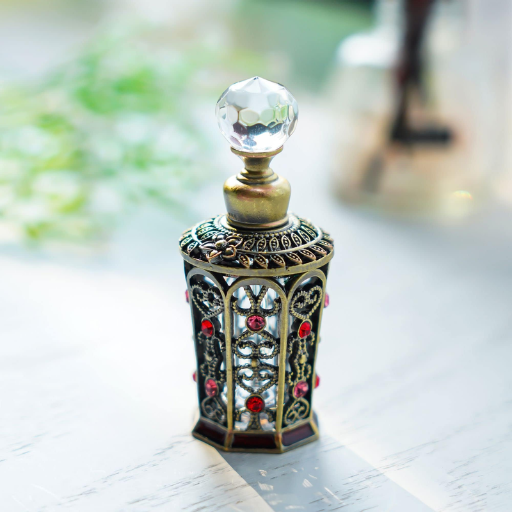
The storage of antique perfume bottles should be done with utmost care to protect them from any light, temperature, or humidity variations that may lead to the damage of fragile glass, metal and enamel. Clean your bottles carefully with a soft, clean cloth and avoid any harsh chemicals, which could cause discoloration or scratching of sensitive finishes or embellishments. Wear gloves when handling them so that oils from your hands are not transferred to their surfaces. Keep them in a locked display case that out of reach from dust. Consider not only shelving the case, but also reinforcing it as padded supports to prevent enthusiastic guests from knocking it over or breaking anything inside. Keep all your vintage bottles in good condition by checking for damage such as cracks or yeast buildup. Wasting no time, repair or recondition the items to avoid depreciation.
Proper Cleaning Techniques for Glass and Crystal
1.Water of Appropriate Temperature: Cleaning of glass and crystal should always be done using water of warm temperature only. Water that is cold or hot results in changes in the temperature of the glass causing cracks.
2.Taking Mild Detergent: Make sure only mild and non-toxic detergent is used to clean such materials and avoid those with harsh chemicals or aggressive cleaners that might damage the smooth surface of these objects.
3.Gentle Cleaning Accessories: Cleansing of glass and crystal should be done with super soft sponge or microfiber cloth making sure that no scratchy stuff rub their surface. Refrain from using scouring pads or brushes with stiff bristles.
4.Rinse Properly: Make sure that all of the soap has been rinsed away from the surfaces because if it remains, it will cause smearing, especially in crystal.
5.Use Lint Free Towels for Wiping: After the rinse, a soft towel that is lint free or may be a microfiber may be used for drying without wiping as it will not leave fibres or streaks. Air drying of the glass or crystal may leave white marks on them.
Storage Tips to Preserve Fragrance and Patina
1.Avoid Direct Sunlight: Remember, it’s best to keep everything out of the sun and especially areas that have high moisture saturation to avoid getting rid of any odors and appearance of the items.
2.Seal It In: Cleare, replace, reuse anything, including the candle and the potpourri after removing the fragrance from each of these items to filling a plastic container and covering it to prevent any evaporation.
3.Temperature Control: Avoid subjecting stored materials to high temperatures and cold conditions, as there may be changes within the fragrances and also to the patina.
4.Shelves: When covering shelves with shelving paper, choose one that is made of fabric without any abrasive surface so that the items’ surfaces do not get the clarity scratched.
5.Separate Choices per Mineral: Do not stack different types of materials on each other such as glass and metal arrangements to limit, or where possible, avoid tarnishing especially by causing possible reactions, and changes in the appearance and even smell.
Maintaining the Integrity of Stopper and Ormolu Elements
To take care of stoppers and decorative gilded objects, I make it a point to routinely and lightly dust them with a microfiber towel or another soft material to avoid the accumulation of grime. I do not care about chemicals or rough scouring agents. These are known to be dangerous to the fine ormolu and even the stopper cosmetics. Also, Special care is taken to ensure that these objects are not stored in the sun or in places where there is high moisture to avoid losing their shine and corroding, Nonetheless, where any piece starts to get defective or begins to come off, I see a restorer to help preserve the object as it should be.
Reference Sources
-
History of Perfume Bottles: A Time Line – This source explores the historical evolution of perfume bottles, starting from ancient Mesopotamia and Egypt.
-
Antique Perfume Bottles – A detailed look at the art of glass-blowing and the creation of luxury perfume bottles in the Roman Empire.
-
Perfume Bottles – A Collector’s Guide – This guide delves into the history and decorative aspects of perfume bottles, particularly from the late 19th and early 20th centuries.
-
Why Perfume Bottle Design Is As Important As Scent Design – Discusses the significance of design in antique and vintage perfume bottles, highlighting their artistic and functional aspects.
-
The Best Of Perfume Bottle Design By The Decade – A century-long exploration of perfume bottle design, showcasing how designs reflect historical and cultural trends.
Frequently Asked Questions (FAQs)
Q: Which elements and resources are mostly incorporated into the development of perfume bottles of past time?
A: Glass, crystal, porcelain, and metal are some of the elements that make antique perfume bottles that are very valued. Gold, silver and gilt as well asother excesses are commonly employed by designers. The clear cut designs and use of clear glass also advanced because the color of the perfume was well visible.
Q: How to confirm even that it is a French vintage perfume bottle?
A: Exquisite antique perfume bottles of French origin have Manhattan long necks, fine curves and great craftsmanship. You can even find some bottles that bear signatures or designer marks – known names such as René Lalique or Occamy scent manufacturers. The use of such materials as glass or crystal or even gold and various elements, including the presence of jewels as an ornament, can also be an indication of authenticity.
Q: Why is René Lalique important in the context of antique perfume bottles?
A: René Lalique is famous in history as a French Designer who worked with glass and jewels in a very unique and expressive manner. Perfume bottles that were created by him are considered a high degree of Art, as he used clear and frosted glass with intricate patterns to make them. Lalique’s works are treated as objects of art and are immensely appreciated by collectors.
Q: What are the features of Art Nouveau perfume bottles?
A: The uniqueness of the Art Nouveau perfume bottles lies in the flowing, curved shapes and decorations, which are inspired by nature. Such designs use materials including glass and metals while utilizing design embellishments such as vines, flowers and women. Cut glass and other artistic elements are sampled out showcasing the work and working of the period.
Q: What are the motives behind the collection of miniature perfume bottles?
A: The collection of miniature perfume bottles is majorly due to admiration and a sense of history. They are a creative miniature representation of a designer that is often elaborately decorated. Their miniature size can easily make them part of someone’s dresser or dressing table and add some reason for the display, even small space.
Q: What was the role of artisans in making the old perfume bottles?
A: Craftsmen played an important role in the development of antique perfume bottles as their talent in glass blowing, metal or decorative arts enriched the bottles which were simply elegant. Their skill ensured that each piece had the highest quality and detail, thus making these bottles transcend mere containers to become beautiful sculptures.
Q: How did the design of perfume bottles change over the years?
A: The design of perfume bottles has not remained the same. It has varied over the years as a result of changing artistic and cultural influences. From the Baroque era where the designs were intricate, decorated and bejeweled to the modernist bottles with simple minimal lines; every era brought in new technologies and materials such as crystal and molded glass making luxurious looking simple perfumer bottles.

